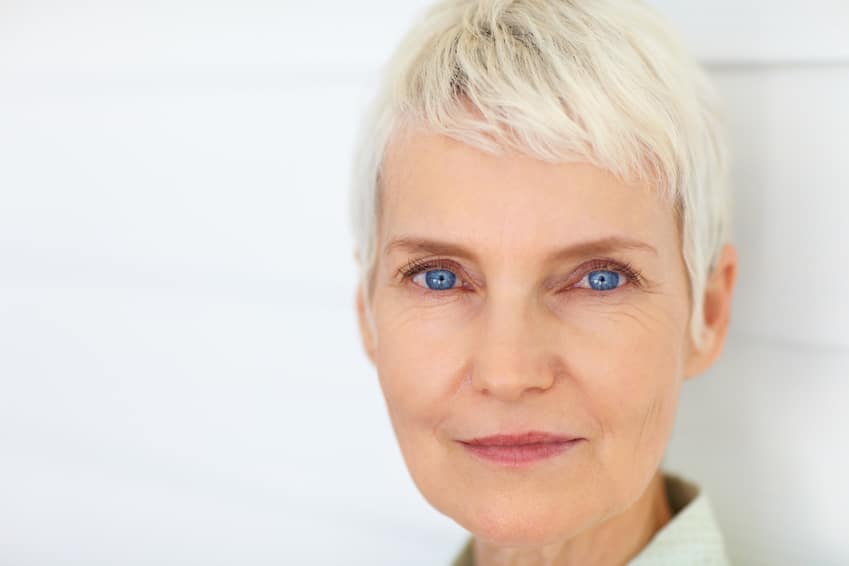We apologize we are not currently offering facial plastic surgery procedures
A facelift is the gold standard of facial rejuvenation. With aging, facial features undergo predictable changes characterized by development of wrinkles and facial sagging. Facial wrinkling is most prominent in the forehead, eyes and mouth regions. Facial sagging is most visible in the brows, cheeks and neck causing droopy brows, deep nasolabial folds, jowls, and loose neck skin. Many patients consider facial rejuvenation surgery including a facelift because they want to look as young as they feel.
Facelift Procedures are constantly evolving

Facelift surgery has evolved as plastic surgeons have gained a greater understanding of the anatomic changes that occur with aging. Early face lifts involved simply tightening the skin. This is still the practice of some out-dated plastic surgeons and many non-plastic surgeons who perform facial plastic surgery. With modern facelift techniques, the results are more natural and more durable if the underlying soft tissues (SMAS) are reshaped as well. This allows facial rejuvenation without the excessively pulled or face-lifted look of older techniques.
In today’s lifestyle, many patients prefer less aggressive cosmetic surgery with decreased downtime. There has been a general “shift” in the thinking of many plastic surgeons regarding face lift procedures towards non-surgical options and less aggressive surgeries when able. Many patients are still best served by “full face-lift” techniques, namely those with a great deal of excessive skin. However, in most patients, similar or better results can be accomplished with a less aggressive surgery. A “mini-facelift” uses shorter incisions (shorter scar) and less skin undermining. The deep tissues are reshaped and lifted to an elevated, youthful position.
What about Branded Facelifts (Lifestyle, Quick, Swift…)?
Face lifts and facial rejuvenation have been marketed extensively by both plastic surgeons and non-plastic surgeons (often referring to themselves as cosmetic surgeons). Facelifts are frequently marketed as a trademarked lift procedure with catchy names such as lifestyle lift, quick lift, swift lift, or some other adjective implying an easy procedure with minimal downtime. The patient should check the credentials of these physicians as many, but not all, are not board certified plastic surgeons. In actuality, these mini-facelift procedures are all basically minor modifications of the s-lift or MACS facelift. In the appropriate candidate, these mini-facelift procedures can give excellent results with a quicker recovery and less expense. Dr. Yates is experienced with all types of facial rejuvenation, serving the Salt Lake City Utah metro area and will let you know at the time of the consultation if you are a candidate for a less invasive procedure.
How is a Facelift performed?
A facelift can be performed under either general anesthesia or sedation with local anesthetic. Incisions are placed in well hidden areas and are varied according to the patients needs — beneath the chin, in the creases in front of the ears, and occasionally in the scalp behind the ear. Most patients (about 80%) are candidates for short scar techniques with incisions from the side-burn to the earlobe only. The skin and deeper soft tissues of the cheeks and neck are lifted and reshaped to provide a more youthful appearance. As each patients “problem areas” and specific needs are different, the procedure is tailored to the individual patient.
How much does a Facelift cost?
The fees associated with a facelift include: 1) surgeon’s fees 2) anesthesia fees 3) facility fees. As Dr Yates has an in-office operating suite, the facility fee is minimal. This is a cost savings directly to the patient. For a list of the costs of common procedures performed by Dr. Yates click here.
How much younger will I look following the Facelift?
This is a hard question to answer, it would be misleading to tell a patient that after a facelift they will look exactly as they did 5, 10, 15 or even 20 years ago. Generally, however, a patients perceived age can be decreased by about ten years with facial rejuvenation.
What should I expect from the recovery period following a Facelift?
After the facelift you will have a dressing and drains. These are removed in 1-2 days and a compressive bandage is applied to reduce swelling. There is moderate pain for a few days following a facelift for which you will be given pain medications. Bruising and swelling can be significant for the first several days following a facelift. You can expect to be “presentable” in public in 3-4 weeks although some mild swelling will last for up to a year. Click here for Dr. Yates facelift post-op instructions
What risks are associated with a Facelift?
Dr. Yates will thoroughly discuss the rare but potential risks associated with facial rejuvenation at the time of your consultation. These generally include but are not limited to; bleeding, scarring, infection, asymmetry, nerve injury, tissue loss and unhappiness with cosmetic result. The risk of poor healing is much higher in smokers, Dr Yates requires patients to refrain from smoking for 6 weeks in preparation for facelift surgery.
What about Non-Surgical Options
There has been an influx of “hot” new non-surgical techniques for facial rejuvenation. Many of these can be used to enhance the effects of a face lift or can be used on their own.
- Botox is now the number one cosmetic procedure performed in the United States. It is important to understand that Botox only treats specific wrinkle patterns such as those around the eyes. You can get a very minor brow lift from Botox around the eyes.
- Soft tissue filler and injectables (Restylane, Radiesse, Juviderm, Perlane) have been very valuable in facial rejuvenation and are often an adjunct to what can be accomplished with a facelift.
- Thread lifts involve barbed sutures that anchor the skin in a lifted position. These have a very high patient dissatisfaction rate.
- There has been a lot of press about the non-surgical “lunch hour facelift”. This is a marketing ploy and can mean a number of things, frequently this refers to radio-frequency ablation (Thermage) which claims to tighten the collagen in the skin. This has largely fallen out of favor due to lack of effectiveness and poor patient satisfaction.
How do I schedule a consultation or schedule surgery?
Contact Dr. Yates office or feel free to email him any additional questions you may have.

